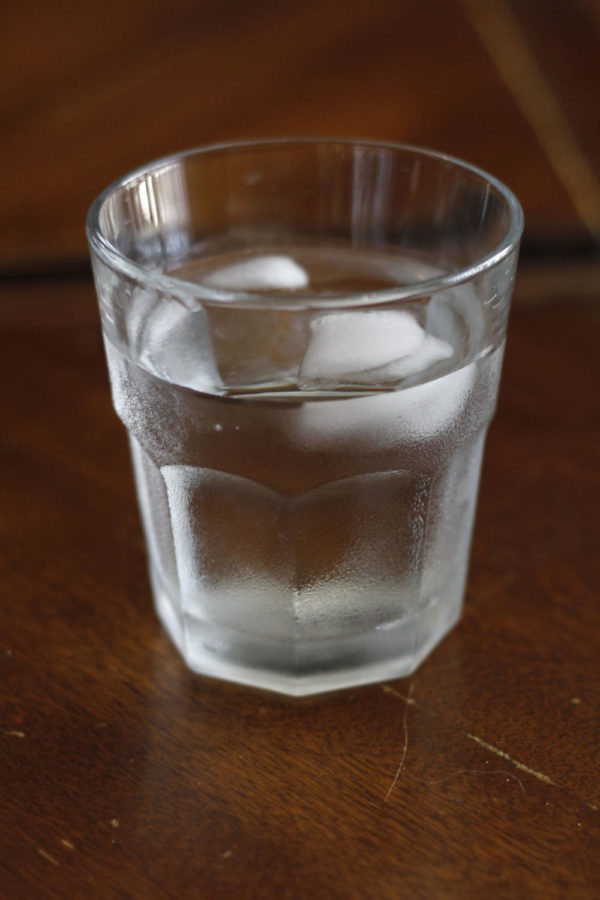What’s in the water? A look at Ames’ drinking water
Photo: Miranda Cantrell/Iowa State Daily
drinking water
January 13, 2018
This series explores how the Iowa State community and its members prioritize sustainability as they interact with resources such as land, water and electricity. ‘Sustainable steps: A look at green efforts in the Iowa State community’ is a collaborative project between the Greenlee School of Journalism depth reporting class and the Iowa State Daily.
It’s the most common advice for staying healthy. Doctors, coaches and even your parents probably encourage you to drink more water. Yet most people don’t think twice about where their water comes from or what chemicals are added to it.
Lyle Hammes, superintendent of the Ames Water Treatment Plant, explained how the city purifies the water that comes out of your kitchen sinks and why each additive is important.
Limewater: 380 mg/liter or .00038 percent
Contrary to its name, this isn’t the same as putting lime juice in water. Hammes says the first step to purifying water after it reaches the treatment plant is aeration to remove toxins, such as carbon dioxide and iron. The next step is to add limewater.
“We use lime to soften the water once we remove the calcium-magnesium hardness,” Hammes said.
The United States Environmental Protection Agency (EPA) website reads lime softening is the “best available technology” for removing minerals such as radium, uranium, arsenic, iron and manganese. On average, total water hardness put out by the Ames Water Treatment Plant is 160 mg/liter, which is a 42 percent decrease from raw water hardness at 380 mg/liter.
The softer the water, the fewer minerals it contains.
Chlorine: 2.5 mg/liter or .0000025 percent
According to the Centers for Disease Control and Prevention (CDC), sodium hypochlorite, or chlorine, has been used to purify water in the United States for 100 years.
The purification process doesn’t end with the water treatment plants. The Iowa Department of Natural Resources (DNR) requires water systems to maintain a balance of 1.5 mg/liter of chlorine throughout the entire distribution system.
Becky Schwiete of the Iowa DNR said chlorine is about the only disinfection method that allows the DNR to check and have confidence in its endurance.
“Generally, a form of chlorine is the preferred method of disinfection,” Schwiete said. “That is because we require the distribution system test out at homes at different taps to make sure they maintain a chlorine residual and that proves to us that the water is staying disinfected.”
Hammes said to maintain this balance, the Ames Water Treatment Plant releases the water at a higher chlorine level (2.5-2.8 mg/liter). The water eventually loses some of that chlorine as it travels throughout Ames, but enough to stay above the minimum of 1.5mg/liter.
“The most critical thing is to make sure people have a safe supply of water,” Hammes said. “People ask us if [the water quality situation in] Flint, Michigan could happen here. The answer is yes, if we don’t do our job correctly. If we have the chemistry correct, we’re good … we do about 190 tests a day to check.”
Daily monitoring of chemicals added to water is required by the state. Schwiete said nitrate levels and bacteria levels are checked less often than added chemicals, but still regularly according to state regulations for water supply permits.
Fluoride: 0.67 mg/liter or .00000067 percent
This may remind you of a trip to the dentist and in fact, fluoride is added in drinking water to benefit tooth health by strengthening enamel. Almost all water contains some fluoride, but usually not enough to prevent tooth decay. After positive results in a water fluoride study in the 1930s, Grand Rapids, Michigan, was the first city to add fluoride to the water in 1945. By 2012, 75 percent of U.S. community water systems contained fluoride, according to the CDC.
Schwiete said there are many water supply systems in Iowa that add fluoride and in doing so they must do daily monitoring of the fluoride levels onsite to manage healthy chemical levels.
“They have to submit [a monthly operational report] to the field office for review so that we are certain they are not over-fluoridating the water,” Schwiete said.
According to the CDC Community Water Fluoridation webpage, decisions to add fluoride to drinking water are made at a state or local level.







